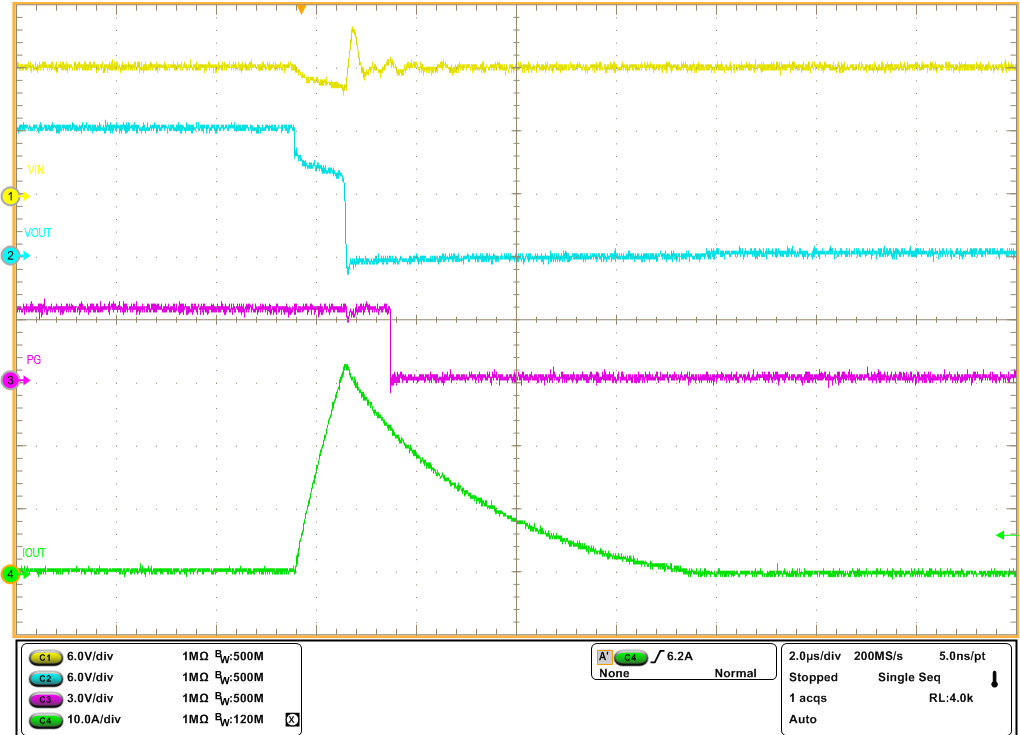SNOU173A October 2020 – December 2020 LM7310
5.4 Output Short-Circuit Test
Use the following instructions to perform output short-circuit test:
Remove the output capacitance. This is to measure the actual current flowing in the device.
Add additional capacitance at the input of EVM. This helps to maintain the input voltage during output short circuit condition.
- Set the input supply voltage VIN to 12 V and current limit of 10 A. Turn ON the power supply.
- Short the output of the device for example, VOUT to GND with a shorter cable.
Observe the output current waveform using an oscilloscope.
Figure 5-5 shows test waveform of output short circuit on the LM73100EVM Ideal Diode Evaluation Board.
 Figure 5-5 Test Waveform of Output Short-Circuit on LM73100 Device
Figure 5-5 Test Waveform of Output Short-Circuit on LM73100 Device